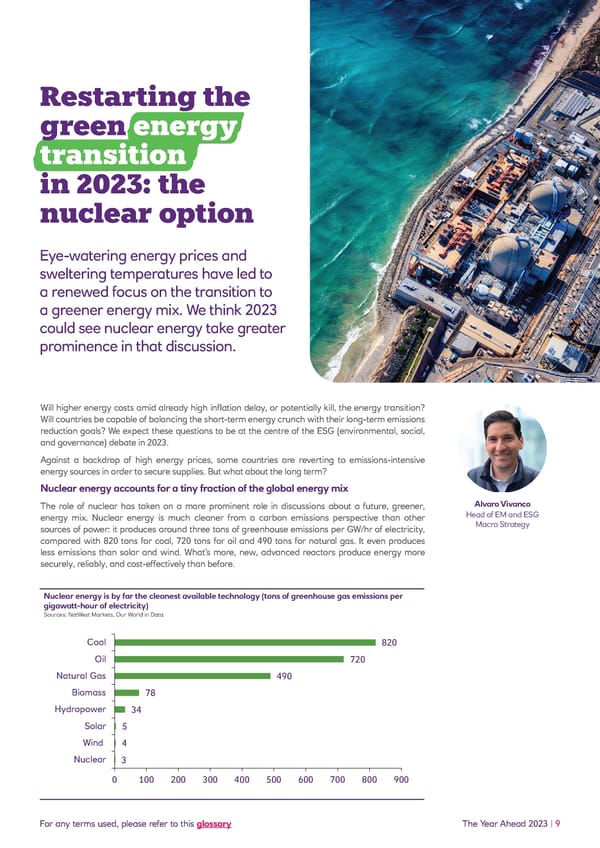Restarting the green energy transition in 2023: the nuclear option Eye-watering energy prices and sweltering temperatures have led to a renewed focus on the transition to a greener energy mix. We think 2023 could see nuclear energy take greater prominence in that discussion. Will higher energy costs amid already high inflation delay, or potentially kill, the energy transition? Will countries be capable of balancing the short-term energy crunch with their long-term emissions reduction goals? We expect these questions to be at the centre of the ESG (environmental, social, and governance) debate in 2023. Against a backdrop of high energy prices, some countries are reverting to emissions-intensive energy sources in order to secure supplies. But what about the long term? Nuclear energy accounts for a tiny fraction of the global energy mix The role of nuclear has taken on a more prominent role in discussions about a future, greener, Alvaro Vivanco energy mix. Nuclear energy is much cleaner from a carbon emissions perspective than other Head of EM and ESG sources of power: it produces around three tons of greenhouse emissions per GW/hr of electricity, Macro Strategy compared with 820 tons for coal, 720 tons for oil and 490 tons for natural gas. It even produces less emissions than solar and wind. What’s more, new, advanced reactors produce energy more securely, reliably, and cost-effectively than before. Nuclear energy is by far the cleanest available technology (tons of greenhouse gas emissions per gigawatt-hour of electricity) Sources: NatWest Markets, Our World in Data Coal 820 Oil 720 Natural Gas 490 Biomass 78 Hydropower 34 Solar 5 Wind 4 Nuclear 3 0 100 200 300 400 500 600 700 800 900 For any terms used, please refer to this glossary The Year Ahead 2023 | 9
 NatWest Year Ahead 2023 Page 8 Page 10
NatWest Year Ahead 2023 Page 8 Page 10